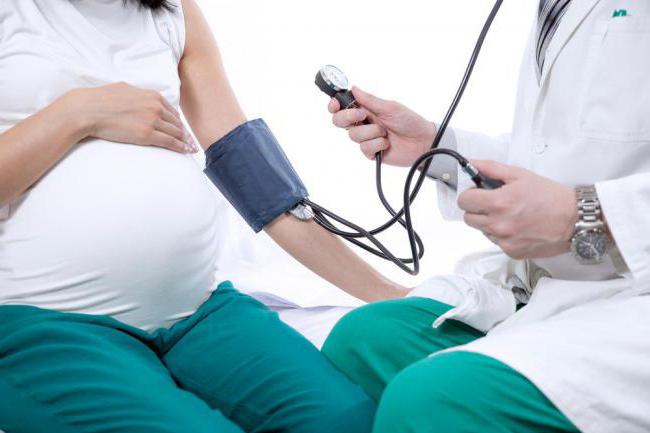Pulse is one of the most important indicators of human health. Along with blood pressure, it reflects possible ailments and impaired functioning of the cardiovascular system and the whole organism. Timely measurements made of these indicators will tell you if everything is okay with you or should you consult a doctor for further diagnostic procedures and selection of treatment.
Let's find out what blood pressure and pulse are, how these indicators are measured, and what their norms are. And also discuss why they are raised and lowered and what this could threaten.
Blood pressure and pulse. Norm indicators
Blood pressure refers to the force of blood on the walls of blood vessels. In systole, the heart contracts and throws out a new portion of blood. The pressure increases. And in diastole, as a result of relaxation of the heart muscle, on the contrary, it decreases. Systolic and diastolic blood pressure reflects the work of the cardiovascular system. Measure it using a special device - a tonometer, on both hands in turn. Optimum values are considered equal to 120/80 mm. Hg. Art. But other blood pressure values are acceptable, varying within normal limits, for example, 110/70 or 115/75 mm. Hg. Art. and etc.
Too low (90/50 mm Hg) or high indicators (140/100 mm Hg) are a must to see a doctor.
The definition of "pulse"
Pulse refers to jerky fluctuations in the walls of blood vessels arising from changes in their blood supply due to contractile heart function. Doctors distinguish three types of pulse:
- capillary;
- venous;
- arterial.
The first type is the oscillation of the walls of the smallest vessels - capillaries. It is almost impossible to diagnose it without using special equipment, by eye, in a healthy person . A capillary pulse is examined to detect certain diseases. For example, it can increase in the presence of heart disease - aortic insufficiency.
Venous pulse
The second, venous, type of pulse is defined as the fluctuation of the walls of the main veins (for example, jugular) located close to the heart. It is caused by a change in the volume and pressure of blood in them. In small and medium veins located far from the ventricles, pulsation is not recorded. Two methods are used to measure venous pulse - invasive, using a phlebotonometer, and non-invasive. If during the examination the doctor notes a positive, that is, pronounced, pulsation of the jugular veins, this may indicate heart disease. Often it is noted with pathological expansion of the valve between the right ventricle and the right atrium and can speak of paroxysmal atrioventricular tachycardia.
The pulse is arterial. Concept and types
Arterial pulse is an oscillation of the walls of the arteries. It is divided into peripheral, palpable on the vessels of the limbs, and central - on the aorta, carotid and subclavian arteries. Increased or decreased arterial pulse provide important information about blood circulation, heart function (tachycardia, heart failure) and the general condition of the subject. Next, we’ll talk about ways to measure your heart rate. We also talk about its normal indicators for different age categories of patients. And finally, we will answer the important question: "Pulse - 100. Is this normal?"
Palpation as the main research method
Most often, the procedure for measuring heart rate is performed on the radial artery. The examinee’s hand is wrapped around the wrist joint with his hand, and all fingers, except the thumb, should be located on the front surface of the radius. The thumb is on the back of the forearm. Having felt the vessel, it is pressed to the underlying bone with two (three) fingers, which allows you to feel the jerky increase in the volume of the radial artery. The pulse study is carried out on two hands and determine the frequency of pulse beats. In addition, their rhythm, tension, filling, height and speed are evaluated. The frequency of oscillation of the walls of the arteries is studied by the method of calculating pulse beats at the correct rhythm for 30 seconds (then the result is multiplied by 2) and if it is incorrect, for 60 seconds. In infants, the temporal arteries are palpated to measure the pulse. In some cases, the carotid or femoral arteries are examined to assess the frequency of vascular oscillations. Sphygmography provides a graphic recording of wall vibrations of large peripheral vessels, and pulse fluctuations of small ones are examined using rheography or plethysmography. At home, special instruments are used to measure the heart rate - heart rate monitors.

Heart rate in different age categories
So, we examined what blood pressure and pulse are. The norm of these values, as we now know, can vary among different people. This is due to the individual characteristics of the functioning of the body. The pulse at rest, in the supine position, in healthy people should be from 60 to 80 beats per minute. In a standing position, the frequency of oscillation of the walls of the vessels usually increases by 5-15 beats per minute. With an increase in body temperature of one degree, the pulse rate also increases by 8-10 beats in 60 seconds. In women, the pulse per minute on average is 6-8 beats more often than in men of a similar age. In people who are actively involved in sports and are constantly receiving long cardio loads, the heart rate is 35-50 beats per minute.
This is due to the fact that the
heart muscle of professional athletes develops, becomes strong and can pump more blood. In children up to a year, the frequency of oscillation of the walls of the vessels is 120-140 strokes per minute. Such high rates are explained by intensive metabolism. With the growth of the child, his pulse gradually slows down. In two years, the frequency of oscillation of the walls of the arteries should normally be 110-115 beats per minute, in three years - 105-110. At the age of four, a pulse of 100 is normal, at the age of seven it is 85-90. By age 14, its value drops to 75 beats per minute. In older people, the frequency of oscillation of the walls of the vessels may be lower than 60 beats per minute.
Heart rate when carrying a child
During pregnancy, the woman’s body undergoes large-scale changes necessary to provide oxygen and nutrients to the growing fetus as much as possible. The heart of the future mother begins to work in an enhanced rhythm, pumping more blood. Its stroke volume significantly increases by the second trimester. Many women complain that their heart beats very fast, and the pulse is more than 100 beats per minute. This condition is called physiological tachycardia. By the third trimester, the pulse rate can reach maximum values - 110, and even 115 beats per minute.

Many women start to panic, seeing that their heart is beating too fast, and ask themselves the question: "Pulse 100 - is this normal?". In fact, do not worry. Doctors say that physiological tachycardia is a mechanism that allows the fetus to fully develop and eat in the mother’s womb. A significant increase in heart rate during pregnancy does not harm either the mother or the baby. A pulse of 100 is normal in the second and third trimester. Contacting a specialist may be required only if tachycardia is accompanied by other unpleasant symptoms - nausea, vomiting, dizziness, and dehydration. This may indicate a violation of cardiac activity. Some pregnant women, on the contrary, feel a significant decrease in heart rate, which may be accompanied by general weakness, fainting, and a drop in blood pressure. In this case, you should also consult a doctor.
Pathological slowdown and increased heart rate
In an adult healthy person, a significant decrease in the frequency of fluctuations in the walls of blood vessels (less than 60 beats per minute) can be an indicator of various pathological conditions. Pulse reduction occurs in the presence of hypothyroidism, obstructive jaundice and with an increase in intracranial pressure. A pathological decrease in heart rate (less than 40 beats in 60 seconds) can be an indicator of a violation of the heart muscle - weakness of the sinus node, sinoauricular block, extrasystole. Bradycardia can threaten serious violations, because the limbs and organs will not receive oxygen in the right amount. Typical signs of a pathological decrease in heart rate are lethargy, dizziness, weakness, fainting. In such a situation, specialist advice is required!
A significant increase in heart rate - pathological tachycardia, accompanied by malaise - may also indicate the presence of any disease. A person may experience such unpleasant symptoms as a feeling of lack of air, chest pain, shortness of breath, dizziness. A pulse of 100 is normal in this case? No, this may indicate anemia, thyroid disease, disturbances in the process of impulse conduction between the ventricle and atrium, dehydration and vegetovascular dystonia.
Rapid heart rate 100. What to do?
An increase in the frequency of fluctuations of the vascular walls in combination with other unpleasant symptoms should encourage any person to undergo a medical examination. During the diagnostic procedures, the cause of the increased heart rate (100 or more beats per minute) will be identified, and the doctor will prescribe the necessary therapy to slow the heart rate. In addition to drug treatment, preventive measures should be taken, including a review of their diet.
Avoid caffeine (coffee, energy drinks, etc.) and alcohol. Stop smoking and start doing your best exercise. Aerobic exercise is especially beneficial - it trains and develops the heart muscle and lungs. If necessary, try to lose weight. Take care of your health to avoid the appearance of pathological tachycardia and bradycardia. So, if you have a rapid pulse (100) - what to do, you now know. And remember, measuring blood pressure and heart rate is the key to your health.